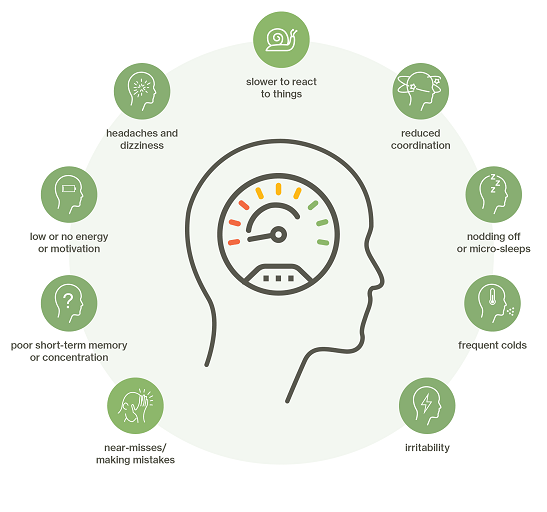WorkSafe Victoria have released a new awareness campaign “You can keep fighting fatigue, until you can’t”, aimed at rural workers to recognise the signs of fatigue before it is too late.

The culture of working long and multiple days in a row is invariably passed down from generation to generation, with sayings such as “these crops won’t harvest themselves“, the emotional campaign is narrated through the eyes of a son who has lost his father.
Know the signs of fatigue
Fatigue isn’t the same as being sleepy or drowsy. It’s about pushing our bodies beyond their mental and physical limits day after day, with no time to recover.
Fatigue impairs reaction times, concentration, and the ability to think clearly and control our moods. For example, working for 17 continuous hours causes impairment equivalent to a 0.05 blood alcohol concentration.
The leading cause of fatigue is lack of sleep
Proper sleep allows the brain and body to repair, so we can get up and go again the next day, consider:
- prioritising sleep
- eating well and limiting caffeine and alcohol
- exercising regularly
- seeking medical advice when fatigue and/or disordered sleep (eg insomnia)
- continue seeking advice for depression, anxiety, grief, stress, addiction or other issues that interfere with your overall wellbeing and ability to work
SafeWork Victoria have illustrated some of the signs that you may be fatigued if you regularly experience some (or several) of the following:

Fatigue can strike anyone in the workplace although industries that work long hours, have repetitive tasks and physically demanding conditions, are often more prone to fatigue-related injuries, such as:
Transportation and Trucking: Long-haul truck drivers often face fatigue-related injuries due to extended hours of driving and irregular sleep patterns. Fatigue can lead to accidents on the road.
Healthcare: Healthcare professionals, particularly nurses and doctors, may experience fatigue-related injuries due to long shifts, high-stress levels, and the physically demanding nature of the work.
Construction: Construction workers can work long hours in physically demanding conditions, which can lead to fatigue-related injuries if they are not adequately rested and attentive on the job.
Manufacturing: Factory workers often engage in repetitive tasks, which, when combined with long shifts, can increase the risk of fatigue-related injuries.
Agriculture: Farmers and agricultural laborers often work long hours during planting and harvesting seasons, which can lead to fatigue-related injuries, especially when operating heavy machinery.
Mining: Mining operations can involve long hours and physically demanding work in challenging environments, increasing the risk of fatigue-related incidents.
Oil and Gas Extraction: Workers in the oil and gas industry may face extended shifts and physically demanding tasks, making them susceptible to fatigue-related injuries.
Emergency Services: Police officers, firefighters, and paramedics often work long shifts and respond to emergencies at all hours, putting them at risk of fatigue-related incidents.
Taking a proactive approach to fatigue management
Creating a culture where employees look out for each other will help with the overall well-being of workers and reduce the risk of fatigue-related incidents in the workplace.
Changing the safety culture of an organisation requires commitment, communication, and ongoing effort. It’s important to involve all levels of the organisation, from leadership to front-line employees.
Education and awareness programs will help employees understand the importance of recognising and addressing fatigue not only for their own safety but for the safety of their colleagues.
If you would like more information about fatigue management in farming, visit the WorkSafe Victoria website, or contact us about risk assessments and training for your industry.

 Safety Australia Group
Safety Australia Group